Smartphone vs. Digital Camera: Which One Truly Delivers?
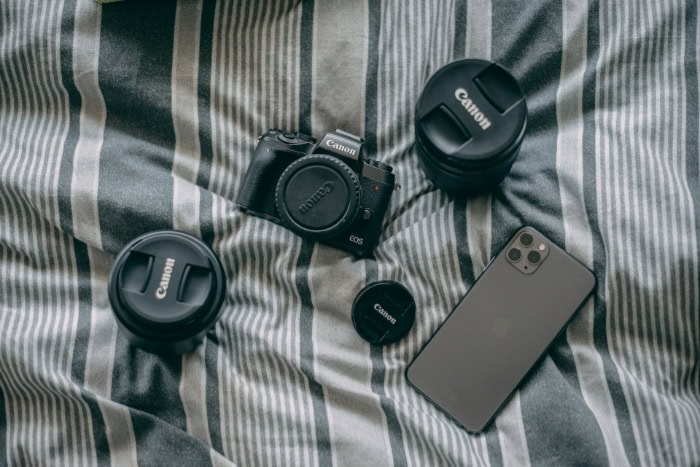
Photography has transformed dramatically since the first digital cameras entered the consumer market. Today's photographers face an intriguing choice between two powerful tools: sophisticated digital cameras and advanced smartphone cameras.
Both options offer remarkable capabilities, yet they serve different purposes and excel in distinct situations.
Modern smartphones pack impressive photographic features into slim devices that fit perfectly in our pockets, while dedicated cameras continue to evolve with superior optics and professional-grade controls.
Image Quality Fundamentals
The difference between smartphone cameras and digital cameras starts with their fundamental hardware components and how they capture light. These technical aspects directly influence image quality, creating distinct advantages and limitations for each device type.
Sensor Size and Light Gathering
Professional digital cameras contain significantly larger sensors compared to smartphones, which makes a substantial difference in image quality. Full-frame sensors in high-end digital cameras measure 36mm x 24mm, while smartphone sensors typically measure around 1/2.3 inches or smaller.
This size difference affects how much light the sensor can capture in a single moment.
Larger sensors collect more light particles, producing cleaner images with less noise, especially in challenging lighting conditions. They also create a more pronounced depth of field effect, allowing photographers to achieve that sought-after background blur in portraits.
Smartphone manufacturers compensate for smaller sensors through advanced computational photography, but they cannot fully replicate the natural light-gathering capabilities of larger sensors.
Resolution and Megapixel Reality
Megapixel count often appears in marketing materials, but the truth about resolution extends beyond these numbers. While smartphones may boast 108MP or even higher resolutions, digital cameras typically offer between 20MP and 45MP.
However, individual pixel size matters more than total count.
Larger sensors with fewer megapixels often produce better images because each pixel can be larger, capturing more light with greater accuracy.
Digital cameras maintain an advantage here – their bigger pixels create images with better detail retention, less noise, and superior performance in various lighting conditions.
Dynamic Range Differences
Dynamic range represents a camera's ability to capture detail in both bright highlights and dark shadows within the same image. Digital cameras generally excel in this area, capturing up to 14-15 stops of dynamic range compared to smartphones' 10-12 stops.
This superior dynamic range allows digital cameras to preserve more detail in challenging lighting situations, such as sunset landscapes or high-contrast street scenes.
While smartphones use HDR (High Dynamic Range) processing to combine multiple exposures, dedicated cameras can capture more information in a single shot, resulting in more natural-looking images with better highlight and shadow detail.
Color Accuracy and Depth
Color reproduction varies significantly between smartphones and digital cameras. Digital cameras typically capture color information at higher bit depths – often 14-bit raw files compared to smartphones' 10-bit capabilities.
This translates to billions more color variations and smoother gradients in the final image.
Digital cameras also tend to produce more accurate colors straight out of camera, while smartphones often apply aggressive processing to create more vibrant, social media-ready images.
Professional photographers appreciate the more neutral starting point of digital camera files, which provides greater flexibility during post-processing.
The raw files from digital cameras contain more information and allow for more extensive editing without image degradation. This extra data proves invaluable for photographers who need to adjust white balance, recover highlights, or make significant color adjustments after capturing an image.
Technical Capabilities
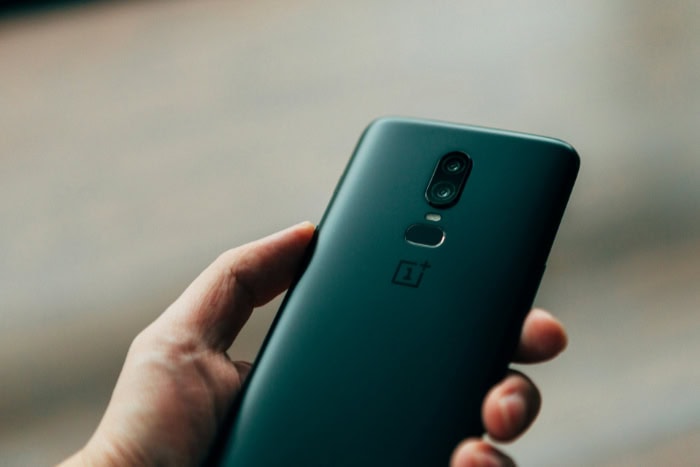
Both smartphones and digital cameras employ sophisticated technology to capture images, but their approaches and capabilities differ significantly. These differences influence how each device performs in various shooting scenarios and conditions.
Autofocus Systems and Speed
Digital cameras utilize advanced phase-detection autofocus systems with numerous focus points spread across the frame. Professional cameras often feature hundreds of focus points, allowing precise subject tracking and near-instant focus acquisition.
Many high-end models include specialized algorithms for detecting and tracking faces, eyes, and even animals.
Smartphones compensate for simpler hardware with powerful software solutions. They use a combination of phase-detection and contrast-detection autofocus, enhanced by artificial intelligence.
Modern smartphones excel at recognizing faces and scenes instantly, though they might struggle with fast-moving subjects compared to dedicated cameras.
Low-light Performance
Low-light photography reveals substantial differences between these devices. Digital cameras maintain image quality in dim conditions thanks to their larger sensors and superior ISO performance.
Professional cameras can shoot at high ISO settings (6400 and beyond) while maintaining acceptable image quality with minimal noise.
Smartphones tackle low-light challenges through computational photography. They capture multiple frames in quick succession, analyzing and combining them to reduce noise and enhance detail.
While this approach produces impressive results for static scenes, it may create artifacts when photographing moving subjects. Night modes in smartphones have improved dramatically, but they still cannot match the natural low-light capabilities of larger camera sensors.
Zoom Capabilities
The difference between optical and digital zoom significantly impacts image quality. Digital cameras offer true optical zoom through interchangeable lenses or built-in zoom lenses.
These maintain image quality throughout their zoom range, with professional telephoto lenses reaching 400mm, 600mm, or even greater focal lengths.
Smartphones primarily rely on digital zoom, which essentially crops and enlarges the image, reducing quality. Some modern smartphones include multiple cameras with different focal lengths, typically offering 2x to 10x optical zoom ranges.
However, anything beyond their optical zoom range results in reduced image quality. The latest computational photography techniques help minimize quality loss, but cannot fully replicate true optical zoom.
Specialized Shooting Modes
Digital cameras offer extensive manual controls and specialized modes designed for specific photography types.
Features like high-speed continuous shooting (up to 30 frames per second in some models), advanced bracketing options, and interval timing for time-lapse photography provide creative flexibility.
Professional cameras also offer robust flash synchronization capabilities and detailed exposure controls.
Smartphones counter with innovative computational features. They excel at HDR processing, portrait mode with artificial background blur, and automated scene optimization.
Many smartphones now include advanced features like long-exposure night modes, macro photography, and AI-powered scene recognition.
These modes make complex photography techniques accessible to casual photographers, though they may lack the fine control professional photographers desire.
The real-time processing power of smartphones enables features like instant filters, live previews of effects, and immediate sharing capabilities.
While digital cameras might offer superior image quality and control, smartphones provide unique creative tools through their computational photography capabilities.
Practical Considerations
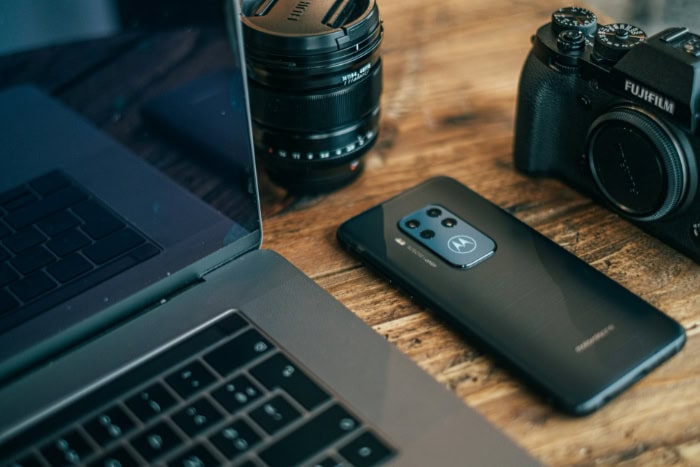
Beyond image quality and technical specifications, real-world usage factors play a crucial role in choosing between smartphones and digital cameras. These practical aspects affect how photographers interact with their devices and influence their ability to capture desired shots.
Portability and Form Factor
Smartphones excel in portability, fitting comfortably in pockets and bags while serving multiple purposes. This convenience means always having a capable camera ready for unexpected photo opportunities.
The slim profile and lightweight design make smartphones ideal for casual photography and daily documentation.
Digital cameras, however, require dedicated space and consideration for transport. A basic mirrorless or DSLR camera with a standard lens might fit in a small bag, but professional setups with multiple lenses demand substantial carrying capacity.
The added bulk and weight can affect mobility and spontaneity, though the ergonomic designs of dedicated cameras offer better handling during extended shooting sessions.
Battery Life and Storage
Battery performance varies significantly between these devices. Digital cameras typically offer 500-1000 shots per charge, and photographers can easily carry spare batteries for extended shoots.
Many professional cameras also feature battery grips for doubled capacity. This reliability proves essential during long events or outdoor photography sessions.
Smartphones must balance photography power consumption with other functions, resulting in shorter battery life during intensive photo sessions. While portable power banks provide backup power, they require additional cables and connection time.
Storage solutions also differ markedly. Digital cameras use interchangeable memory cards, allowing photographers to carry multiple high-capacity cards for extended shoots.
Professional photographers appreciate the ability to swap cards quickly and maintain backups. Smartphones rely on internal storage or cloud solutions, which may require careful management and depend on internet connectivity for offloading images.
Learning Curve and Controls
Digital cameras present a steeper learning curve but offer precise control over photography settings. Physical dials, buttons, and customizable controls allow quick adjustments without looking away from the viewfinder.
This tactile interface becomes second nature with practice, enabling photographers to respond rapidly to changing conditions.
Smartphones simplify photography through intuitive touch interfaces and automated modes. Their familiar controls make basic photography accessible, though advanced features might be buried in menus.
The touchscreen interface works well for casual shooting but can be less precise for manual adjustments and more challenging to use in bright sunlight or wet conditions.
Weather Resistance
Professional digital cameras often feature robust weather sealing, protecting against dust, moisture, and varying temperatures. This durability allows photographers to work confidently in challenging environments, from light rain to dusty conditions.
Weather-sealed lenses complete this protection, creating a reliable system for outdoor photography.
Smartphones offer varying degrees of water and dust resistance, with many modern models featuring IP67 or IP68 ratings. However, their sealed designs mean limited repairability and potential long-term durability issues.
Additionally, touchscreens may become less responsive in wet conditions, making photography more challenging during inclement weather.
Workflow and Connectivity
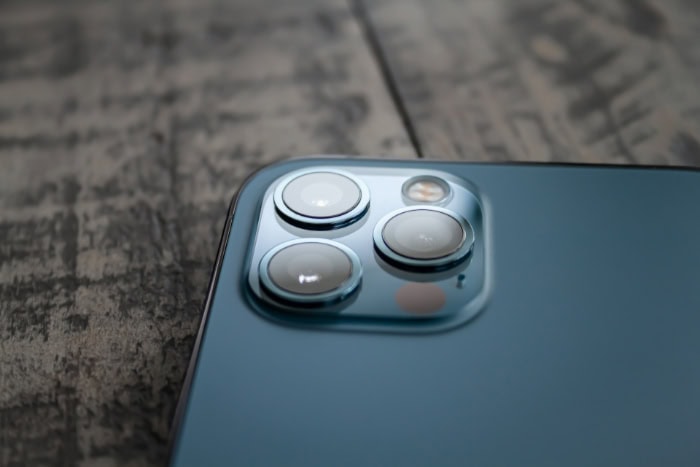
Modern photography extends beyond capturing images – it encompasses a complete workflow from shooting to sharing. Smartphones and digital cameras offer distinct approaches to managing, editing, and distributing photos, each with its own advantages and limitations.
File Management and Transfer
Digital cameras generate high-quality RAW files and JPEGs, which require a structured approach to file management. Photographers typically transfer images through memory card readers or direct USB connections to computers.
Many modern cameras now include built-in WiFi and Bluetooth capabilities, though these transfers can be slower than physical connections. Professional photographers often develop systematic workflows for organizing, backing up, and archiving their image files.
Smartphones streamline the file management process through integrated storage and automatic organization. Photos automatically sort by date, location, and even recognized subjects or events.
The seamless connection between capture and storage simplifies the process, though managing large photo libraries can strain device storage and require regular maintenance.
Social Media Integration
Smartphones excel at social media sharing with native integration into popular platforms. Photographers can edit and post images instantly, complete with location tags, captions, and cross-platform sharing.
This immediate connectivity suits content creators who need to maintain active social media presence or share real-time updates.
Digital cameras have adapted to social demands through companion apps and wireless connectivity. However, the process often involves transferring images to a smartphone or computer first.
While this extra step might slow down sharing, it encourages more thoughtful curation and editing of images before publication.
Editing Capabilities
Both platforms offer distinct editing approaches. Smartphones provide numerous built-in editing tools and third-party apps, allowing photographers to adjust everything from basic exposure to complex effects directly on their devices.
The touchscreen interface makes these edits intuitive, and real-time previews help visualize changes instantly.
Digital camera workflows typically involve desktop editing software like Adobe Lightroom or Capture One. These professional tools offer deeper control over image processing, especially with RAW files.
The larger screen real estate and precise input devices of computers enable more accurate adjustments and better color management. Professional photographers appreciate this level of control, despite the additional time investment.
Cloud Storage Options
Smartphones integrate seamlessly with cloud storage services, often automatically backing up photos as they're taken. Services like iCloud, Google Photos, and OneDrive provide convenient access across devices and automatic organization features.
This integration ensures photos remain accessible and protected, though subscription costs can add up for larger storage needs.
Digital camera users must actively manage their cloud storage strategy. Many manufacturers offer their own cloud services, but photographers often rely on professional solutions like Adobe Creative Cloud or standalone cloud storage providers.
These services provide more robust features for professional workflows, including advanced search capabilities and collaborative tools.
Cost and Value
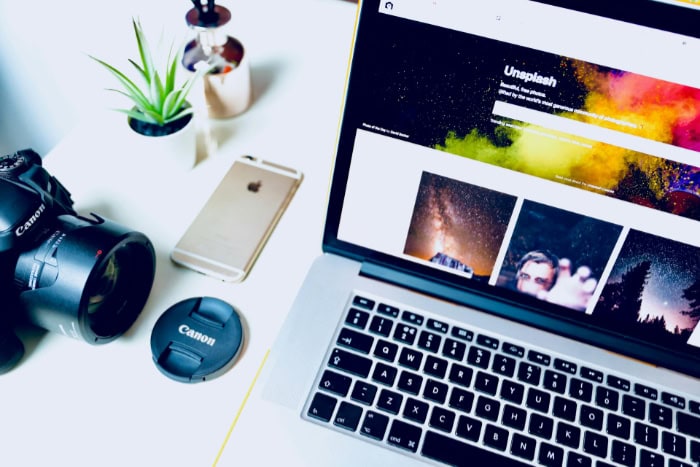
The financial aspects of choosing between smartphones and digital cameras extend far beyond the initial purchase price. Each option presents different cost considerations over time, from immediate expenses to long-term investments in equipment and maintenance.
Initial Investment
Smartphones with advanced camera systems typically range from $800 to $1,500, though this cost encompasses many functions beyond photography. High-end models feature multiple cameras, advanced sensors, and sophisticated computational photography capabilities.
Most people already own smartphones, making the camera feature essentially a bonus without additional cost.
Digital cameras present a wider price spectrum. Entry-level mirrorless or DSLR cameras start around $500, while professional bodies can exceed $3,000.
The initial cost might seem steep, but these devices serve as dedicated photography tools. Mid-range cameras ($1,000-$2,000) often provide an excellent balance of features and performance for serious photographers.
Additional Accessories
Smartphone photography requires minimal extra investment. Basic accessories might include lens attachments ($20-$100), stabilizers ($50-$300), or protective cases. These optional additions can enhance creative possibilities without significant expense.
Digital camera systems demand more substantial accessory investments. Essential items include:
- Lenses ($200-$2,000+ each)
- Memory cards ($20-$200)
- Extra batteries ($40-$100 each)
- Camera bags ($50-$300)
- Filters ($20-$200 each)
- Tripods ($100-$500)
These accessories significantly increase the total investment but provide specialized tools for various photography situations. Professional photographers often accumulate equipment over time, spreading the cost across years of use.
Long-term Durability
Professional digital cameras are built to last, with robust construction and replaceable parts. Many photographers use their cameras for 5-10 years without significant performance degradation.
Mechanical shutters typically last 100,000 to 500,000 actuations, supporting years of heavy use. Manufacturers also provide professional repair services, extending equipment lifespan.
Smartphones face more frequent physical stress as daily-use devices. Their sealed construction makes repairs challenging and expensive.
Camera components remain reliable, but general device wear, battery degradation, and software updates may impact performance over time. Most users replace smartphones every 2-3 years, though not necessarily due to camera issues.
Upgrade Cycles
Smartphone manufacturers release new models annually, with camera improvements being major selling points. While frequent upgrades are available, they're not mandatory for photography.
Modern smartphone cameras remain capable for several years, though software updates might eventually slow performance.
Digital camera upgrade cycles move more slowly, with major models typically refreshed every 3-4 years. This slower pace benefits photographers in several ways:
- Equipment maintains value longer
- Skills remain relevant without constant adaptation
- Lenses and accessories stay compatible across generations
- More time to master existing equipment
Real-World Applications
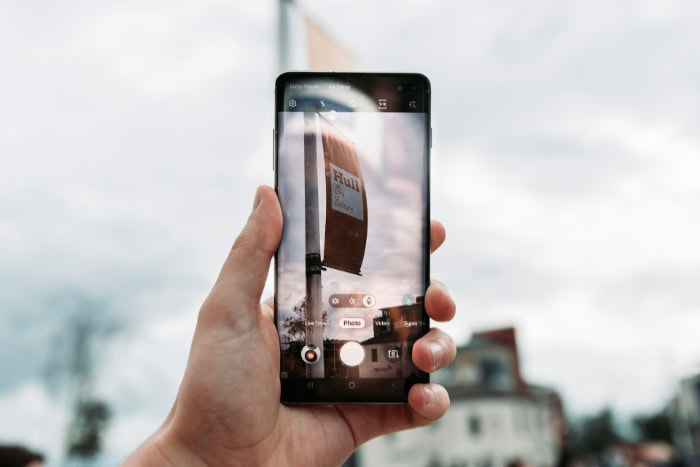
Different photography genres present unique challenges and requirements. Both smartphones and digital cameras demonstrate distinct advantages across various photographic situations, making them suitable for different types of photography.
Street Photography
Street photography demands quick reactions and discretion. Smartphones excel here due to their inconspicuous nature and rapid deployment.
People tend to act more naturally around smartphones since they're commonplace in public spaces.
The computational photography features help handle challenging lighting conditions in urban environments, while wide-angle lenses capture environmental context effectively.
Digital cameras offer superior control over settings and faster autofocus for moving subjects. The optical viewfinder or electronic viewfinder helps frame shots in bright sunlight, where smartphone screens might struggle.
Manual controls allow photographers to pre-set exposure settings for rapidly changing street scenes, though the larger size might draw more attention.
Portrait Photography
Portrait photography reveals significant differences between these tools. Digital cameras create more flattering portraits through their larger sensors and superior depth-of-field control.
The ability to use specialized portrait lenses (85mm, 105mm) helps achieve proper facial proportions and beautiful background blur. Professional cameras also offer better flash synchronization for studio lighting setups.
Smartphones compensate with advanced portrait modes and AI-powered features. They simulate background blur through computational photography and often include skin-smoothing and facial enhancement tools.
While these effects can look artificial to trained eyes, they produce social media-ready portraits that many clients appreciate. The front-facing cameras and screen preview make self-portraits and casual headshots more accessible.
Landscape Photography
Landscape photography benefits from high resolution and extensive dynamic range – areas where digital cameras traditionally excel. Their larger sensors capture fine details in mountains, trees, and water, while their superior weather sealing handles outdoor conditions.
The ability to use filters, ultra-wide lenses, and long exposures provides creative control over natural scenes.
Smartphones have made impressive strides in landscape photography. Their HDR processing can handle challenging sunrise and sunset scenes, while panorama modes create wide vistas.
Night modes capture impressive star fields and low-light scenes. The lightweight nature of smartphones makes them ideal for hiking and traveling, though they might struggle with extreme contrast situations.
Event Coverage
Event photography requires versatility and reliable performance across varying conditions. Digital cameras offer significant advantages through their superior autofocus systems, better low-light performance, and professional flash capabilities.
The ability to switch lenses quickly – from wide-angle for group shots to telephoto for candids – proves invaluable at weddings and corporate events.
Smartphones show strength in event documentation through their instant sharing capabilities and dual-camera setups. They allow photographers to deliver preview images to clients immediately and capture both photos and videos without switching equipment.
The computational photography features help handle difficult indoor lighting, though the image quality might not match client expectations for formal events.
Professional cameras remain the standard for paid event work, offering reliability and image quality that clients expect. However, smartphones serve well as backup cameras or for casual event documentation.
Many photographers use both tools strategically – digital cameras for primary coverage and smartphones for behind-the-scenes content and immediate social media updates.
Conclusion
Both smartphones and digital cameras serve distinct roles in modern photography. Digital cameras excel through superior image quality, professional controls, and specialized capabilities that serious photographers require.
Their robust build, interchangeable lenses, and advanced features make them ideal for professional work and artistic pursuits.
Smartphones bring photography into daily life with computational innovation, instant sharing, and remarkable convenience. Recent advances in mobile photography have narrowed the technical gap, making high-quality images accessible to everyone.
Many photographers find value in using both tools complementarily. Digital cameras deliver unmatched quality and creative control for planned shoots, while smartphones capture spontaneous moments and facilitate immediate sharing.
Each platform continues to advance, offering photographers more creative possibilities and technical capabilities than ever before.
The best choice depends on your photographic goals, required image quality, and intended use of the photos. Both tools have earned their place in contemporary photography, each bringing unique strengths to visual storytelling.


